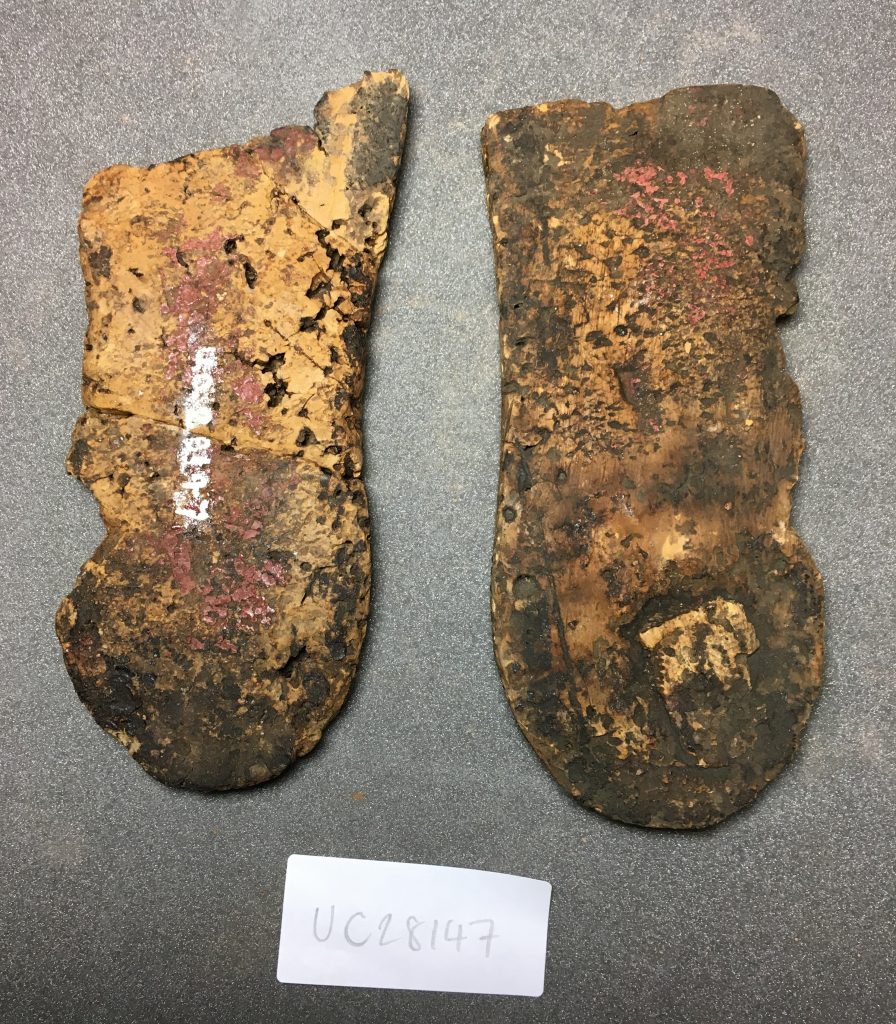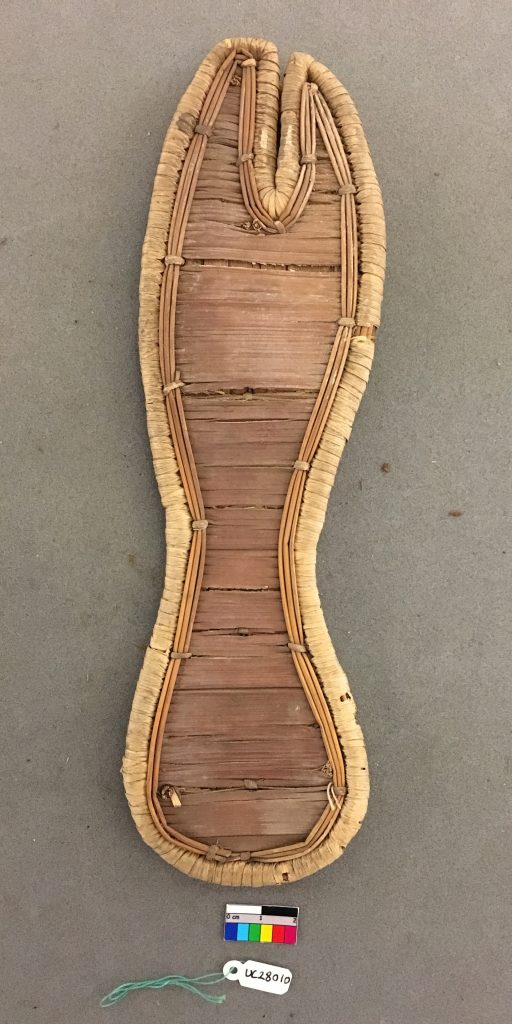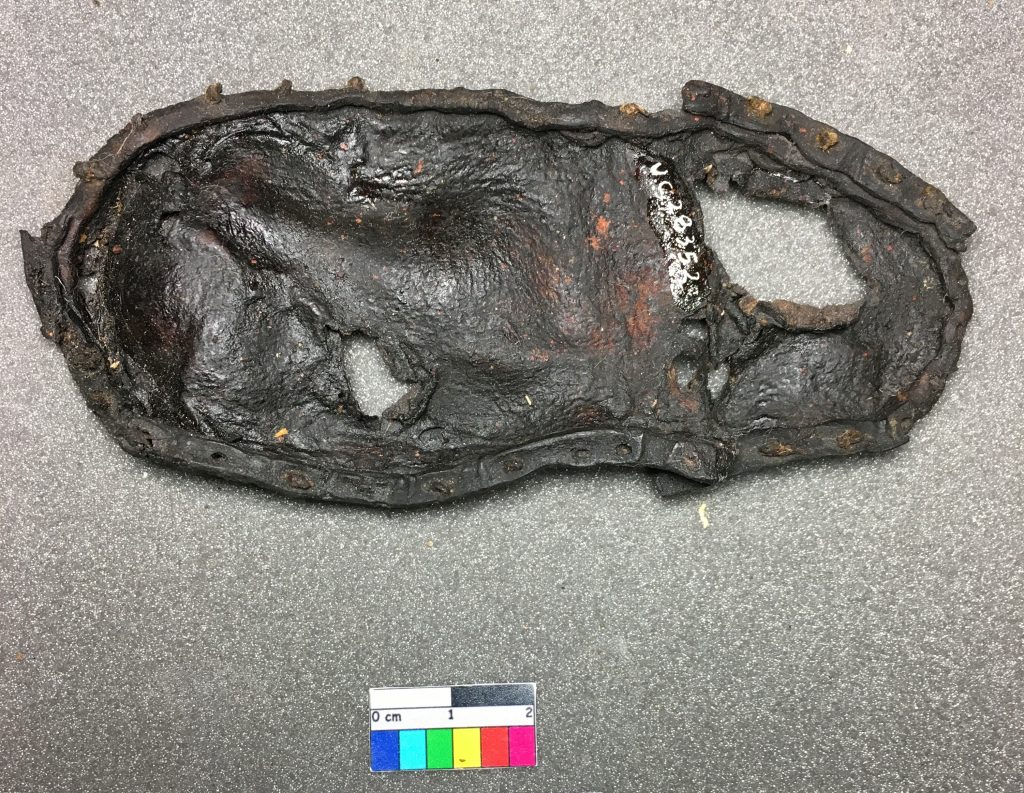Project member Jo Stoner has been collecting data on the Roman shoes and sandals in the Petrie Museum. These shoes are variously made of plant fibres (such as papyrus, grasses, and reeds), leather, or a combination of the two. One pair is even made of cork, perhaps imported into the province from Roman Spain. The shoes and sandals within the collection are in various states of preservation – some examples are incredibly delicate and fragmentary, whilst others are so well preserved they look as though they have just been made.

By building on the work of other scholars who have researched Roman shoes (specifically Carol van Driel-Murray and Elizabeth M. Greene ) Jo is measuring the footwear and using their dimensions to try to identify the gender and age of the person who originally wore them. We can then look to see if there are any patterns in terms of style, material, or deposition that occur in relation to the ages or genders of the owners. The method for identifying the wearer of a shoe or sandal is based on two measurements – the length of the shoe and the width of its “waist” (the narrow part that corresponds with the arch of the foot).

A couple of things however need to be kept in mind – firstly it is important that the measurements are of the insole, and not the outer shoe or the walking surface, as these are generally bigger than the wearer’s foot. Secondly, it is important to consider the material the item is made from. Greene explains that (as shown by data from various archaeological contexts), leather is liable to shrink over time and during the conservation process. Thus, leather shoes could be up to 2cm smaller than they were originally.

This produces a range of dimensions that correspond specifically to leather footwear: 10-12cm in length for an infant’s shoe; 12-19cm in length for a child’s shoe; 19-22cm in length for either an adult female’s shoe OR an adolescent male under the age of 14; and 22cm+ for an adult male’s shoe. These measurements are however only for leather goods as they take possible shrinkage into account – therefore Jo has ensured that when looking at measurements for sandals made from vegetable fibres, an additional 2cm is added to these ranges to compensate.

From the above measurement ranges, you will notice a slight problem – the measurements for female shoes and those belonging to adolescent boys overlap, meaning it can be difficult to distinguish exactly who would have been wearing what. This is because the feet of boys below the age of 14 are in the same region as adult women’s shoe sizes, before they continue to grow onto their final adult male size. For shoes in this range, it is important to record the width of the narrow part of the insole – less than 4cm and it was likely a woman’s shoe (although it is not always clear!).

Out of 70 shoes selected from the Petrie’s collection, Jo has now assigned an age or gender to 90% of them. The shoes of adult men, women, infants, and children are all well represented. The next step is to try and identify any patterns in terms of decoration of shoes and age and gender, or whether there are deposition patterns that also correspond to the identities of the wearers.
Bibliography
E. Greene (2014) “If the shoe fits: Style and function of children’s shoes from Vindolanda” in R. Collins and F. McIntosh (eds.), Life in the Limes: Studies of the People and Objects of the Roman Frontiers (Oxford: Oxbow) 29-36.
C. van Driel-Murray (1995) “Gender in Question” in P. Rush (ed.) Theoretical Roman Archaeology: Second Conference Proceedings (Aldershot: Avebury) 3-21.
